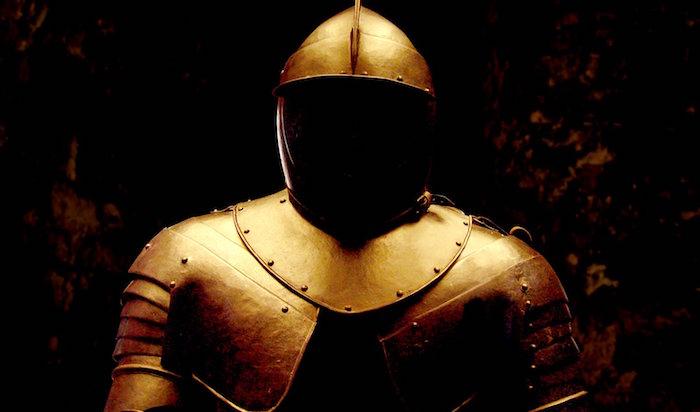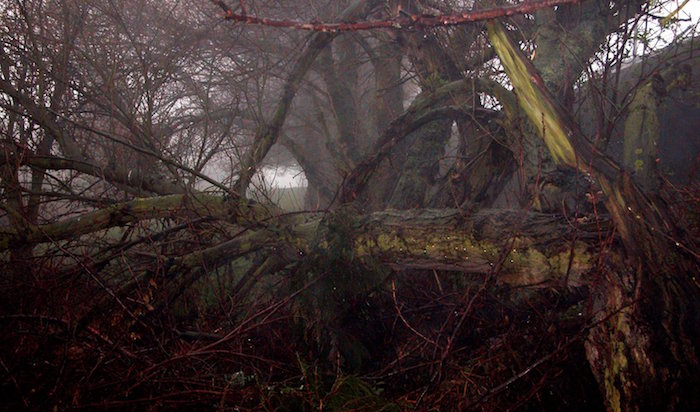This post is exactly what it says on the tin: three encounters suitable for an undead-themed dungeon or any fantasy campaign where undead are present! We’ve got three stories from 1100-1200 A.D. – one from Denmark, one from Britain, and one from Italy.

To start with, we have a tale from The Deeds of the Danes, written around 1200. According to the text, when a man named Asvith died, he was interred in a cave along with his horse and his dog. Because of their great friendship, his comrade Asmund asked to be interred with him too. Folks agreed, gave Asmund some food, and sealed up the hole.
Later, an army of Swedes happened by and saw the plug. They thought there might be treasure in the tomb, so, in fine adventurer style, they broke in to plunder it. The cave was plenty deep, so the Swedes had to lower a volunteer in a basket at the end of a rope. Imagine the volunteer’s surprise when Asmund leaps out of the dark, drags him out of the basket, climbs in, and signals the folks up top to haul him up! When the Swedes at the surface saw Asmund, they fled, because his face was covered in gore and he was missing his left ear.
When the Swedes came back, Asmund told them his terrible story. For Asvith did not stay dead. He came back, devoured his horse, tore apart his dog, and then turned on Asmund. The wight tore off Asmund’s ear before the living man was able to cut off the revenant’s head and stake him through the chest.
At your table, this is a great bit to insert during a dungeon or Underdark delve. The PCs are exploring some pit, well, or tomb, and unexpectedly encounter disfigured, half-mad Asmund. Whether they help him or not, his message is clear: things don’t stay dead down here. And though Asvith is dead twice over, Asmund has no idea where the body is. He might still be out there, might come back once more to stalk the living.

If a simple combat encounter is all you’re after, 12th century British tales of revenants tell of beings that are the literal bodies of the dead, able to come and go from their tombs at will. They seek to destroy the living. They’re terribly strong, and are often accompanied by packs of baying hounds.
These revenants usually emit a foul odor that spreads disease. At your table, you might treat it as an aura that functions as Stinking Cloud in a certain radius. At least one revenant, when ‘slain’, gushes forth the blood of all the people it has killed. If you make that blood acidic or boiling, you can stat it up as a death effect: all targets within ten feet must make a Reflex save or take damage from contact with the blood. If you give the revenant high melee damage too, this will definitely be a monster you want to ‘kite’ (attack only from ranged).
The dogs, however, may make that difficult. In these stories, the baying hounds that accompany revenants are clearly mortal: feral animals and strays. Because they need to breathe, they’ll stay out of the miasma aura. Consequently, the PCs are ‘safe’ if they stay in the aura, but if they leave it, they’ll be set upon the hounds. Consider giving the creatures extra bonuses for ganging up on the same target; they are pack animals, after all. The dogs are what take this encounter from ‘just another fight with the undead’ to something memorable!

Finally, we have an encounter with the righteous dead. This one dates back to around 1150, and concerns two Italian dukes, one of whom devoted considerable expense to praying for the dead. (As a side note, probably neither duke actually existed.) According to medieval Catholicism, prayers for the dead could help those sinners who died unrepentant, and therefore no longer had the opportunity to be saved. This duke, Eusebius of Sardinia, paid for church services, gave alms, and donated to charity all taxes from one of his most prosperous cities on behalf of the dead in Hell.
Eusebius’ rival, Ostorgius of Sicily, was an evil man. He conquered the city Eusebius set aside for holy purposes. Eusebius tried to retake his city, but his army was much smaller than Ostorgius’. All hope seemed lost for the holy man. But just before the battle, Eusebius’ sentries saw far off in the distance another army! Its men and horses were white as snow, rode beneath snow-white banners, and carried weapons that blazed like sunshine.
Eusebius exchanged messengers with the snow-white army, who reassured the good duke that they were on his side. They belonged to the retinue of God, and if Ostorgius didn’t give back twice what he took, the snow-white army would kick his ass and drag him before Eusebius in chains. Ostorgius immediately surrendered and did what he was told. Before leaving, the snow-white soldiers revealed to Eusebius that they were the souls of men whom God had freed from Hell because of Eusebius’ good works on their behalf. They praised his generosity, thanked him again, and returned back the way they came.
At your table, these guys could be a lot of fun if you use them while they’re on the way to the battle. Freed from Hell, they’re riding through the Underworld towards the surface to set things right for their patron. Their path happens to take them through whatever dungeon or pocket plane the PCs are exploring. The PCs can roleplay with them, and if the party follows them, the snow-white army clears the way. All threats melt away before this army of redeemed souls, and the PCs can travel safely in their wake.






